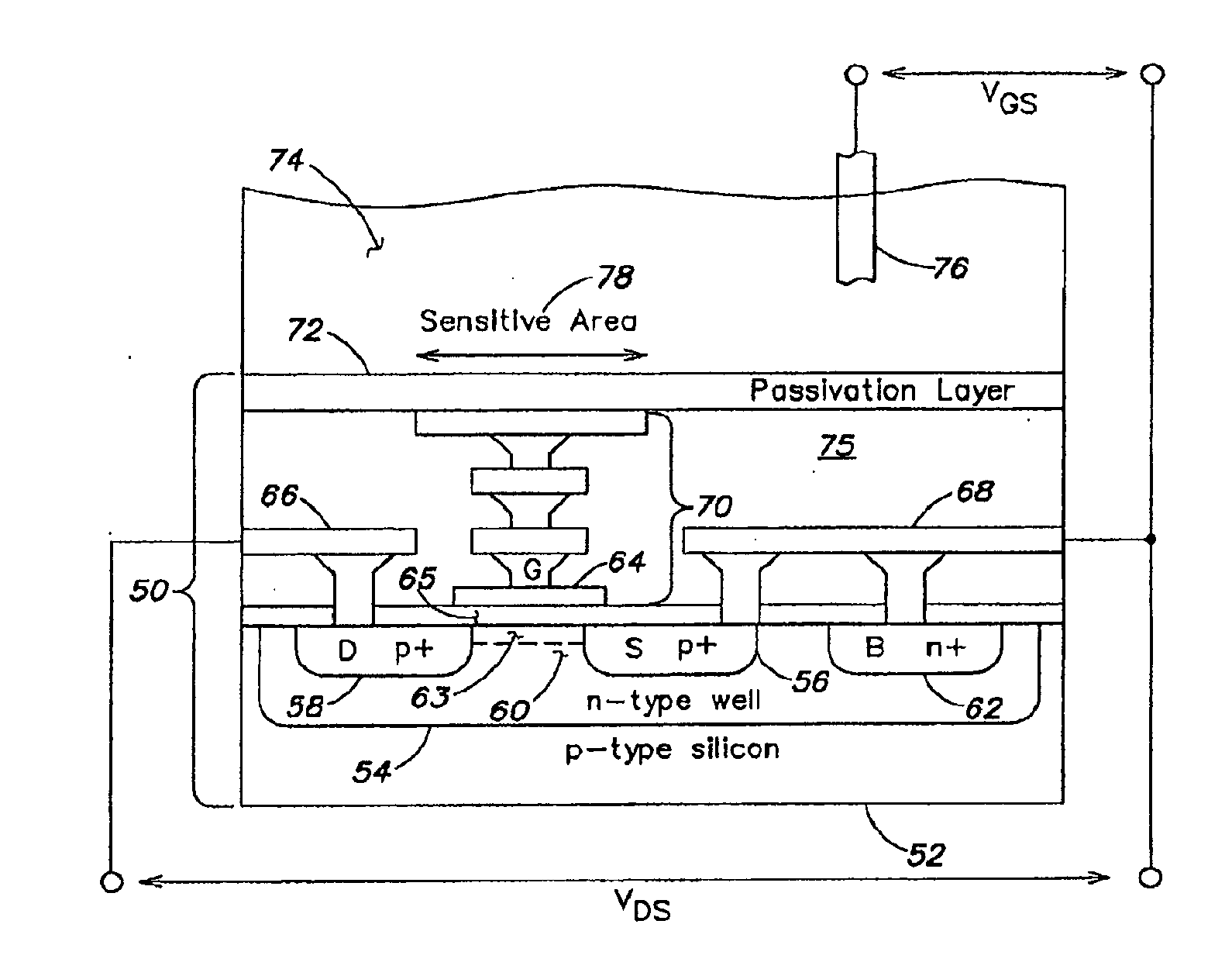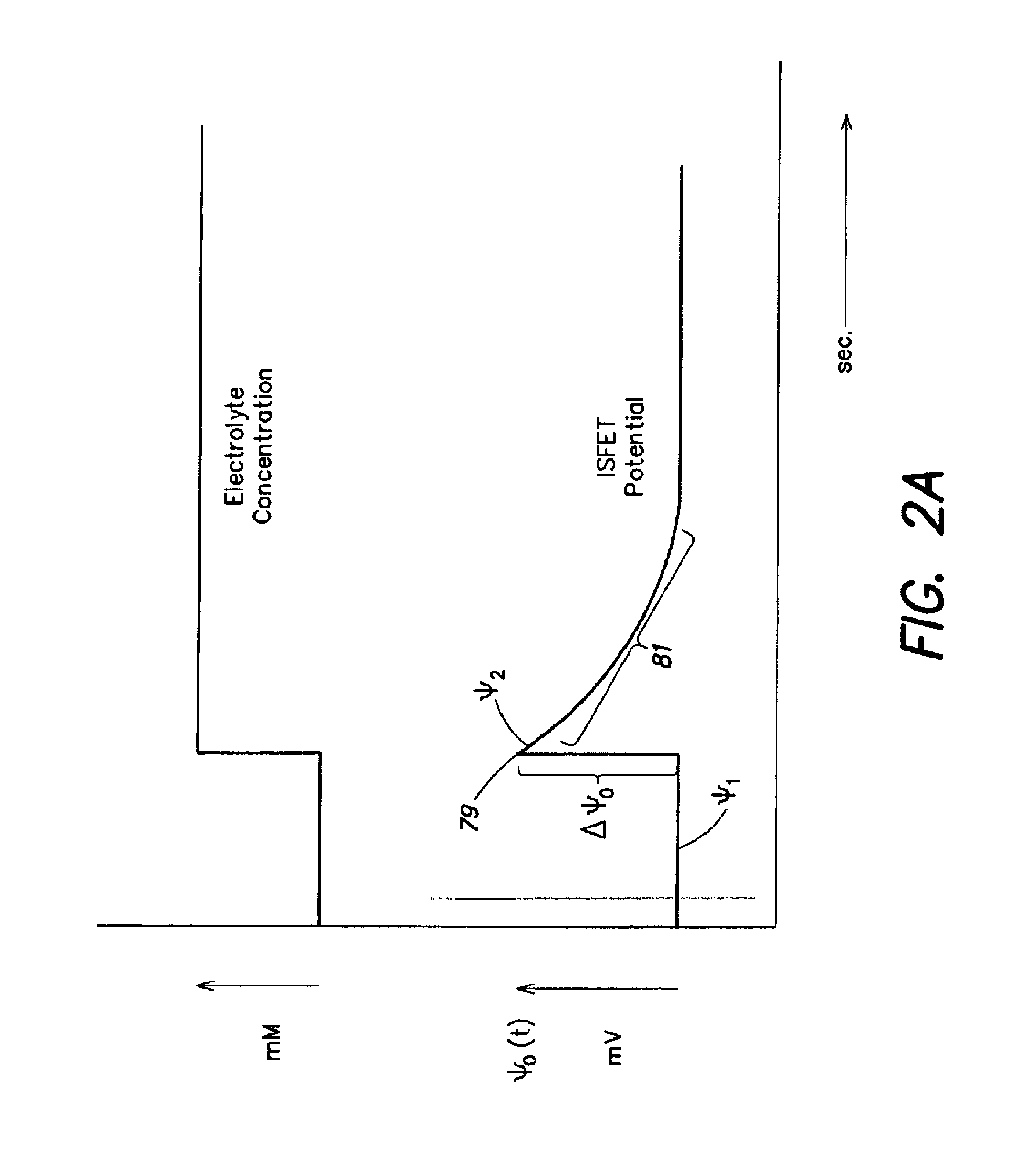Methods and apparatus for measuring analytes using large scale fet arrays
a technology of fet array and analytes, which is applied in the field of methods and apparatus for measuring analytes using large scale fet array, can solve the problems of unpredictability of transmission gate operation, or omitting operation entirely, and the length of individual templates that can be sequenced, and the rate of sequence determination
- Summary
- Abstract
- Description
- Claims
- Application Information
AI Technical Summary
Benefits of technology
Problems solved by technology
Method used
Image
Examples
example 1
Bead Preparation
[0625]Binding of Single-Stranded Oligonucleotides to Streptavidin-Coated Magnetic Beads.
[0626]Single-stranded DNA oligonucleotide templates with a 5′ Dual Biotin tag (HPLC purified), and a 20-base universal primer were ordered from IDT (Integrated DNA Technologies, Coralville, Ind.). Templates were 60 bases in length, and were designed to include 20 bases at the 3′ end that were complementary to the 20-base primer (Table 3, italics). The lyophilized and biotinylated templates and primer were re-suspended in TE buffer (10 mM Tris-HCl, 1 mM EDTA, pH 8) as 40 μM stock solutions and as a 400 μM stock solution, respectively, and stored at −20° C. until use.
[0627]For each template, 60 μl of magnetic 5.91 μm (Bangs Laboratories, Inc. Fishers, Ind.) streptavidin-coated beads, stored as an aqueous, buffered suspension (8.57×104 beads / μL), at 4° C., were prepared by washing with 120 μl bead wash buffer three times and then incubating with templates 1, 2, 3 and 4 (T1, T2, T3, T...
example 2
Low Ionic Strength Effects on Polymerase Activity
[0649]Experiments were conducted to test various polymerases for certain functionalities associated with the sequencing aspects and embodiments discussed herein, including in particular low ionic strength nucleotide incorporation reactions. These functionalities include the ability of a polymerase to extend a sequencing primer in low ionic strength, affinity of a polymerase for primer / template nucleic acid hybrids in low ionic strength, rate of primer extension, and ability of polymerase to extend primers in the context of a well situated above a chemFET sensor. Each of these functionalities will be discussed below.
[0650]Polymerase Activity in Low Ionic Strength.
[0651]Polymerase activity can be measured by determining the extent to which a primer is extended along a template. A fluorescent reporter assay was devised to measure polymerase activity (FIG. 72A). Briefly, a fluorescently-labeled DNA oligonucleotide (referred to in the cont...
example 3
Increasing Speed and Throughput
[0661]One advantage of the array architecture used on the ISFET / chemFET chips is that all microwells receive and process chemical materials in parallel and the outputs of the FETs are analyzed in parallel. While a single chip is limited to N wells and the number N will increase over time as semiconductor processes shrink devices ever smaller, no matter how many FETs and wells (also known as reaction chambers) are on a single chip, a system may readily be build with two or more chips in the same machine, operated in parallel; or multiple machines may be operated in parallel and as their FETs provide output, those outputs can be processed in parallel to reduce the time required to sequence a genome or perform another analysis. Parallel computing is well known and there are multiple known ways for computer scientists to configure the processing of the outputs of several chips to expedite the computation of the desired output. Hence, with multiple chips, e...
PUM
| Property | Measurement | Unit |
|---|---|---|
| surface area | aaaaa | aaaaa |
| surface area | aaaaa | aaaaa |
| surface area | aaaaa | aaaaa |
Abstract
Description
Claims
Application Information
 Login to View More
Login to View More - R&D
- Intellectual Property
- Life Sciences
- Materials
- Tech Scout
- Unparalleled Data Quality
- Higher Quality Content
- 60% Fewer Hallucinations
Browse by: Latest US Patents, China's latest patents, Technical Efficacy Thesaurus, Application Domain, Technology Topic, Popular Technical Reports.
© 2025 PatSnap. All rights reserved.Legal|Privacy policy|Modern Slavery Act Transparency Statement|Sitemap|About US| Contact US: help@patsnap.com



